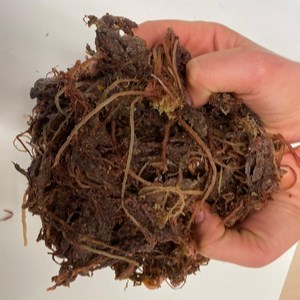Contact
Department of Applied Animal Science and Welfare, Forage utilisation
Department of Applied Animal Science and Welfare, Forage utilisation

Ruminant livestock account for about half of the total greenhouse gas production in agriculture, where a large proportion of the emissions come from their digestion (enteric fermentation). Policies can be combined with information to consumers and investments in research to achieve climate and environmental goals . In the dairy industry, it is desired to produce milk with zero climate footprint, for example by increasing the carbon storage on farms, reducing the consumption of fossil fuels, increasing the biodiversity and using feed with as little climate impact as possible.
Ruminants are unique in that they can utilise for humans non-edible fibrous feeds (i.e. mainly forages) and convert it into highly nutritious food such as milk and meat. The utilization of plant material is made possible by the particularities of the ruminant digestive system that is based on microbial degradation and selective retention of feed particles in the rumen, the largest of the cattle’s’ fore-stomachs. The rumen microbial ecosystem, or microbiome, is diverse, containing bacteria, protozoa, fungi, methanogens and bacteriophages, which interact with each other and govern greenhouse gas emissions. Estimates suggest that beef and cattle milk production are responsible for the majority of emissions from livestock production systems. Methane is almost 25 times more potent than carbon dioxide as a greenhouse gas. Additionally, around 10% of the animals’ energy is lost because of methane production. Although extensive research has been done on the production of methane by ruminants, and efforts have been made to develop strategies and methods to reduce emissions, practical applications have proved to be few.
The project will integrate a high level of technology with the highest expertise to link rumen microbiome information to development of feed based mitigation strategies in a north European-Canadian cooperation. Feed based mitigation of ruminant methane production can be achieved from diet compositions or natural dietary ingredients that are more suitable than others to reduce emissions, or from feed additives that are natural or artificial and suppress the methanogenesis without affecting the animal health and productivity.
The tropical red algae Asparagopsis taxiformis has shown great potential to reduce CH4 emissions from dairy cows and sheep (between 50 and 70 % reduction) when ingested in small amounts with everyday feed. The mechanism behind the reduction is an inhibition in the final enzymatic step of methanogenesis in the rumen. The inhibition is achieved by algae secondary metabolites, especially bromoform. Other algae species in temperate seas can contain equivalent secondary metabolites and can be valid supplements in livestock feed for methane reduction. A possible future product has to be be easily integrated with the basal feed and accepted by the farmers, but can promote development of a new niche production on the countryside.
In SEASOLUTIONS we will map the effect of seaweeds on methane inhibition. The validity of seaweed in feed products will be determined from life cycle analysis and cost benefit analysis. The project partners Department of agricultural research of northern Sweden, SLU Umeå, and Department of sustainable development, environmental science and engineering, KTH will collaborate with industry, Skånemejerier, in this project.